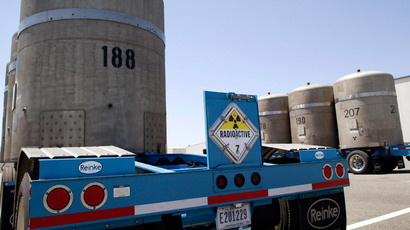Feds say cleaning up most contaminated nuclear weapons site in US is too costly

The United States government recently argued in court filings that the state of Washington’s request of $18 billion over 14 years to address the nation’s most polluted nuclear weapons production site should be rejected based on expense.
The US Department of Justice said in a court filing on Friday that the cost of the state’s proposal for a hastened cleanup of the Hanford Nuclear Reservation would cast into doubt other nuclear projects funded by the Department of Energy.
According to The Tri-City Herald, the filings in US District Court by the DOJ and the state of Washington were part of the state’s lawsuit that seeks a more pressing timeline for Hanford’s cleanup.
Friday was the deadline for the parties to comment on new cleanup timelines, as the DOE said many of the existing timelines were at risk of being missed.
Hanford, located along the Columbia River in south-central Washington, is the site of 177 massive underground nuclear waste storage tanks, making it the largest collection of nuclear waste in the US. For four decades, the site was home to plutonium development for use in the production of nuclear weapons.
As RT previously reported, a deal was recently struck between the DOE and Washington state to allow a leaky radioactive storage tank at Hanford to remain as is for more than a year before its contents are removed.
In its court filing, Washington state again criticized federal management at Hanford and asked for an intensified oversight plan to address its leak-prone waste tanks and the construction of a $13 billion vitrification plant to treat waste for future burial.
The state said in its filing that the DOE wants to establish future cleanup deadlines at the expense of hard deadlines already agreed to by the parties in a 2010 consent decree, which sprang from a 2008 lawsuit following the department’s failure to meet an earlier set of deadlines for the plant and its waste tanks.
The construction project"should be matched with the best project management plans in the country,"the state contended."Energy, however, implies that such planning is impossible."
The state asked for more than 100 new deadlines to keep the Department of Energy’s cleanup process on track, yet the Department of Justice argued the plan was out of reach.
"The state's proposal would require a dramatic and unrealistic increase in funding that, if mandated, would jeopardize DOE's ability to carry out ongoing cleanup operations on other parts of the Hanford site and at other sites across the country,"documents filed by the Justice Department stated.
Hanford’s construction and waste management get $1.2 billion annually from the federal government, more than one-fifth of the Department of Energy’s annual budget for national environmental cleaning projects.
The state’s plan requires $4 billion over the next five years, on top of the current level of annual funding, the Justice Department said.
The Justice Department also said the state’s plan would violate the 2010 consent decree for cleanup, as the proposal would demand new storage tanks and treatment facilities.
The federal government has claimed construction work at Hanford has fallen behind because of technical issues.
Hanford contains"53 million gallons of High Level Radioactive hazardous waste, equivalent to 2,650 rail cars full of waste,"according to the Washington State Dept. of Ecology, making it the most contaminated nuclear site in the United States. Or, as Heart of America Northwest called it,"the most contaminated site in the Western Hemisphere."
In 1943, construction began on Hanford as part of the top-secret Manhattan Project.
"Hanford was the producer of the plutonium that fueled the 1st test explosion in Alamogordo, New Mexico on July 16, 1945. The same plutonium also powered Fat Man, the five-ton atomic bomb that exploded over Nagasaki on August 9, 1945,"according to Heart of America Northwest.














